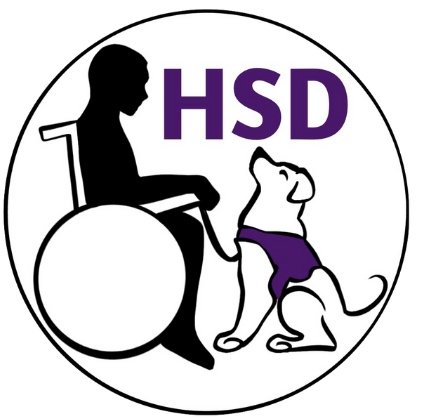Ehlers-Danlos Service Dogs
Ehlers-Danlos syndrome (EDS) encompasses a group of disorders that impact connective tissues, which provide support to the skin, bones, blood vessels, and various organs. These connective tissue defects can lead to a wide range of symptoms, from mildly loose joints and skin that is easily bruised to more serious complications that can be life-threatening. The severity and specific characteristics of EDS can vary significantly among individuals, making personalized management and care essential.
Service dogs are specially trained to perform tasks that help mitigate the disabilities of their owners. For individuals with Ehlers-Danlos syndrome, some of the valuable tasks a service dog can be trained to perform include:
▢ Alerting family members for help
▢ Assisting with position changes (helping the owner sit or lie down during a medical crisis, rise & steady, or transfer from a chair to the floor to or wheelchair)
▢ Providing balance support
▢ Bracing or leaning against handler for grounding
▢ Counterbalance to help maintain stability
▢ Deep Pressure Therapy to alleviate anxiety or discomfort
▢ Fetching medication or a phone
▢ Find specific locations or items (bathroom/car/etc)
▢ Forward momentum pulling to assist movement
▢ Grounding techniques to help bring focus
▢ Medical recovery support
▢ Medical response during emergencies
▢ Medication reminders
▢ Picking up items that have fallen
▢ Proprioception awareness to enhance spatial awareness
▢ Retrieving emergency medication or water
▢ Fetching medical equipment or mobility aids (wheelchair, cane, walker, grabber, etc)
▢ Staying with the owner until help arrives
These tasks significantly enhance the quality of life for individuals with Ehlers-Danlos syndrome, providing practical assistance and emotional support.

